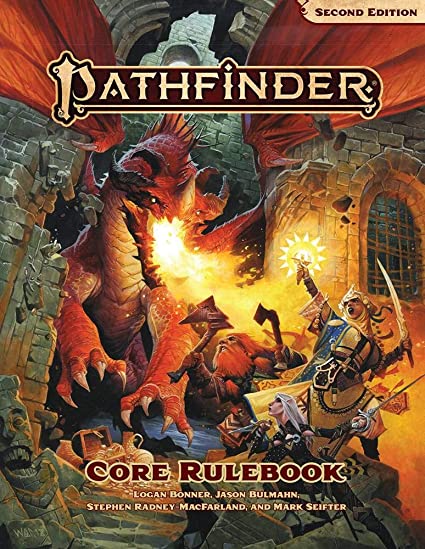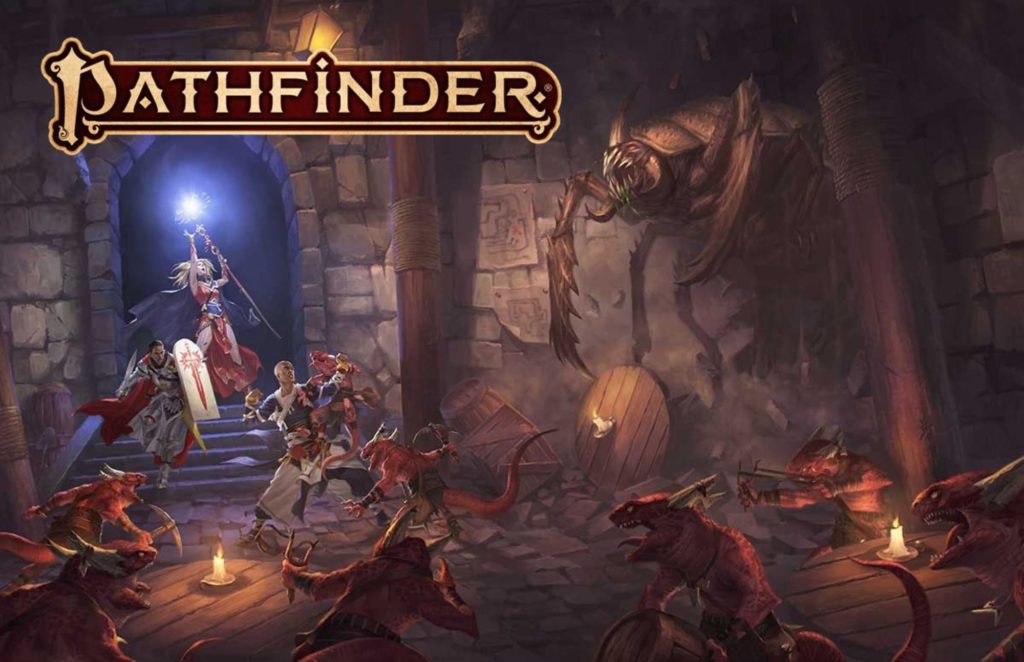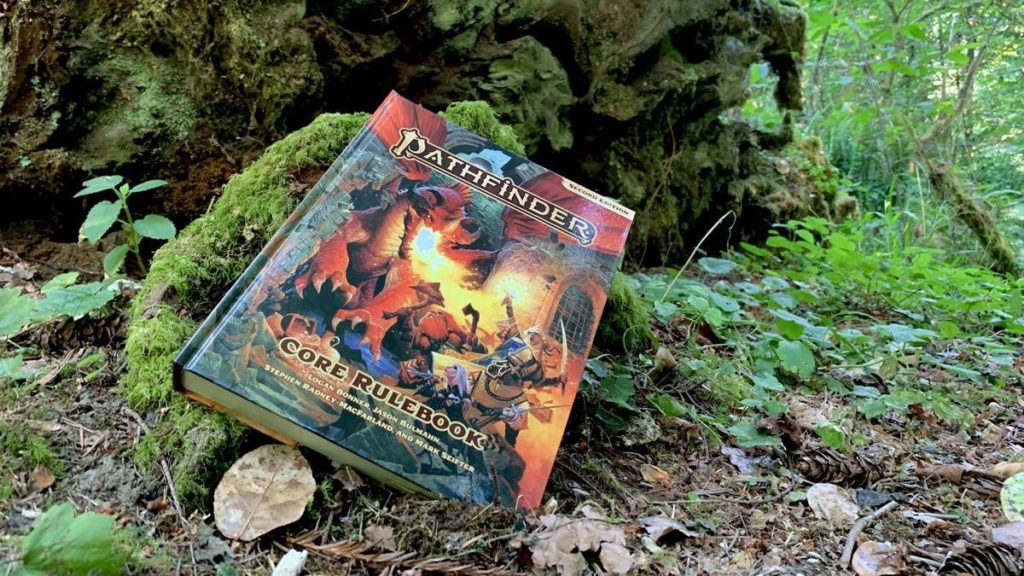Hello, everyone!
Previously, we talked about Dungeons and Dragons 5th Edition in my last article. Specifically, how the game was very friendly to new players in both its format and game design. With that in mind, I wanted to take a look at the Pathfinder Second Edition Core Rulebook, published by Paizo.
Guest Writer: Caleb
From the onset, you can see that this is a role-playing game aimed at gamers, rather than those unfamiliar with tabletop role-playing. The cover of the 5th Edition Player’s Handbook features a single character attacking a giant, while the Pathfinder Second Edition Rulebook’s cover features a party of adventurers defending against a red dragon.
Already, we see the difference just from what the cover art tells us. 5th Edition D&D is trying to get you to see yourself as the lone hero, charging against a powerful foe. Pathfinder Second Edition is trying to get you to see yourself as part of a group, leaning on each other. While there is some overlap in this marketing, the art is very clearly targeting two different groups.
In addition, as we look at character generation in Pathfinder Second Edition, we see that it is far more complicated than the character generation in the 5th Edition Player’s Handbook. A player chooses ancestry, background, and class. Every level, a player must choose class features and feats.
While this allows for greater customizability, this is very unfriendly to new players. Paizo attempts to mitigate this problem with thorough explanations at every step of the character creation process, but I can already see a lot of guidance needing to be done for a new player (or even a veteran) introduced to this system for the first time. Given the huge number of options available, analysis paralysis is an inevitable problem.
With all that said, this is a great system for creating broad concepts, as the ancestry and background feats offer an incredible variety of options simply unavailable in 5th Edition D&D. Want to play a gnome tiefling? What about a werebadger dwarf? Maybe a steampunk robot with the soul of an elf? You can do all this in Pathfinder Second Edition. This really appeals to gamers who want to try something new and strange.
So, how does this compare to 5th Edition D&D? Think of 5th Edition as a simple game you can easily pick up and play. As a Game Master, this is a game you should run with mostly new or inexperienced players, or veteran players who want to get through character generation quickly.
When you look at Pathfinder Second Edition, you should think of it as a more difficult game to learn, but with greater freedom that lets you do more with your imagination. You should run this game with at least a few veteran players, but make sure you familiarize yourself enough with the system to run it effectively, and avoid having to look up rules. (Which, as a Games Master and a Player, I hate with the fiery passion of a million exploding suns. I am here to play a game, not look up rules, blast it all!)
Next article, I will talk about how to effectively run a game as smoothly and with as little interruption as possible, while making certain everyone (including you) enjoys the game.
And remember, Frontline Gaming sells gaming products at a discount, every day in their webcart!





